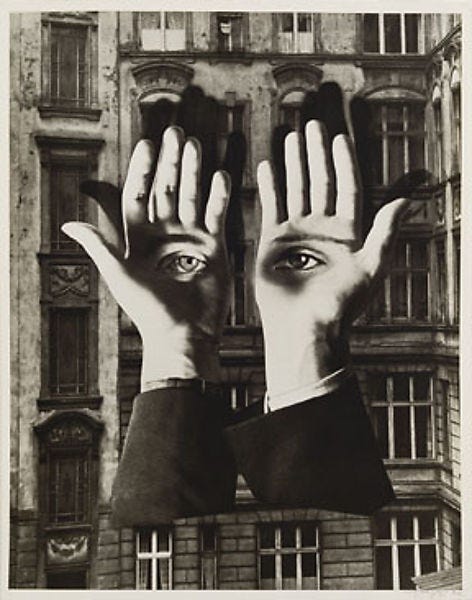#120 Hands-on design 🤲
Hands that think and musical gloves
This week’s Design Lobster is a right handful. We’re asking whether it’s possible to think with your hands and trying on some extraordinary music-making gloves. Gimme five! 🖐
✨Enjoying Design Lobster? Please share it with a friend, colleague or fellow designer.
Question: Can you think with your hands?
Those of you reading this who have tried to capture an idea or thought in a sketch, will recognise the way that your thinking evolves as you start drawing upon the page. The act of doing the sketch helps you understand something about the situation or problem you are thinking about, and it is as if your hand and the pencil are somehow also part of your mind.
“In drawing, the physical act itself provides an intensifying “container” which makes possible a kind of thinking which occurs at no other time. Typically, we advance the drawing half from reason and half from intuition, and the drawing itself provokes still more intuitive and associative responses which in turn provoke more drawing.”
—James McMullan, illustrator
This quote comes from an essay written in 1990 by James McMullan, an American illustrator and educator. It neatly captures why drawing is such an essential tool for designers, allowing us to relate important aspects the external situation to internal mental processes. In this sense, a sketch is a kind of bridge between our minds and reality, helping us find new ways of shaping that reality to meet our goals.
Design takeaway: How could you make progress with a design problem by sketching it?
✍️ You can read more of James McMullan’s essays here
Object: Mi.Mu gloves
I’m always interested in design that helps us interact more naturally or expressively with technology and so I was very excited to learn about these high-tech musical gloves. Developed by artist Imogen Heap alongside researchers from the University of the West of England, they contain sensors that detect the position and flex of your hands and allow these movements to create or manipulate sounds. Using the associated Glover software, you can set up what different movements or gestures do, enabling a wide variety of musical performances.
“The thing that's really, really expressive about people, more than anything, is their hands and so we wanted to make a device that catches the expressiveness of your hands and uses that as a controller for making electronic music.”
—Adam Stark, a software engineer working on the project
Mi.Mu gloves have been used by artists including Drake and Ariana Grande during live performances, liberating electronic music-making from laptop screens and MIDI controllers. I can’t help but wonder what other fields of human endeavour might be unleashed creatively with more expressive forms of interaction like these gloves.
Design takeaway: How could your design help people express themselves more intuitively?
🧤 Watch a video of the gloves in action
Quote: “The door handle is the handshake of the building.”
– Juhani Pallasmaa, architect and author of The Eyes of the Skin
This is one of my favourite quotes about architecture. I love the way it humanises our interaction with an everyday piece of design – making it sound almost like two old friends meeting. I often find it a useful to ask myself what my design would be like if it were a person. What kind of personality would it have and how would it come across?
Have a great week,
Ben 🦞
Enjoyed this week’s Design Lobster? Let me know by clicking the heart button ❤️
👇




Another advocate of sketching is the psychology prof Barbara Tversky who has published research papers on the positive affect of sketching. Her book Mind in Motion is a great read and established that spatial reasoning, not language, as the foundation for abstract thought. We interviewed her on our Substack-hosted podcast, Artificiality, and wrote about her in our book, Make Better Decisions (https://mbd.zone).
The gloves sound like the latest
Iteration of the theramin. How wonderful it would be, to be able to meld mind in such a way that you could share the music you imagine.